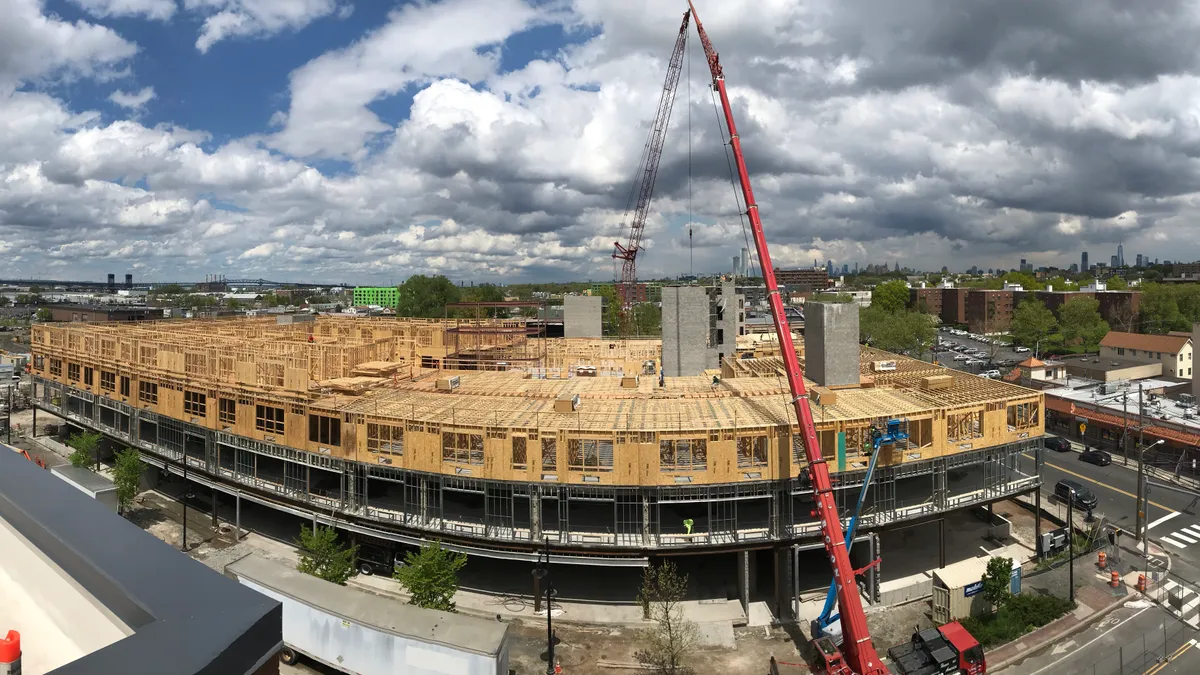Founded just five years ago, Arc Building Partners has already worked on some of the most high-profile projects in the Northeastern U.S.
The 60-employee construction management firm headquartered in Western New York, with another corporate office in Morristown, N.J., relies on technology to help solve project management issues and keep costs down on its projects, according to president and CEO Frank Ciminelli.
Some of these techniques include virtual design, lean construction and reality capture to maximize efficiency and avoid issues that may drive up costs for clients, Ciminelli said.
Notable recent completed projects include:
- Renovations at the Buffalo Bills’ Highmark Stadium in Orchard Park, New York.
- New Era Sports Performance & Science Addition in Orchard Park, New York.
- 201 Ellicott Street Residences & Braymiller Market in Buffalo, New York.
- The James luxury apartments in Park Ridge, New Jersey.
- The Southland Casino & Hotel Complex in West Memphis, Arkansas.
Here, Construction Dive talks with Ciminelli about his firm’s journey during the pandemic, a potential recession and other challenges in the construction industry.
Editor’s note: This interview has been edited for brevity and clarity
CONSTRUCTION DIVE: You started your company a few years before the COVID-19 pandemic hit. How did that affect your business?
FRANK CIMINELLI: We entered 2020 with a backlog that was more than 250% larger than our first two years, due to our company’s entrance into the New York-New Jersey metro market, and strong wins in both Western New York and our gaming industry vertical. By April 2020, over half of that was suspended or canceled.
The negative economic impact was even greater in 2021, when we felt the brunt of the cumulative effects of decreasing labor productivity, workforce shortages, supply chain disruptions, projects running long and the increased cost of doing business.
Our company was already 100% cloud-based, so transitioning to remote work was not a huge hurdle, but our work is still on the jobsite. I have to say that our team was incredibly resilient despite all the uncertainty.
Now as we approach 2023, our company workforce has rapidly expanded yet again, and we are continuing to realize new project wins and effective deliveries for existing clients.
How have you been able to win so many large and diverse projects in such a short period of time?
We like to believe that there is an equation that defines our continued positive momentum, and it can be summarized as: “wins = people + relationship = track record = trust.”
We do not bid work, as the game of chance is too adversarial.
Delivering what you promise on time and on budget also remains a hallmark of our company, and the reason why the work keeps coming.
What are the biggest challenges for contractors in your part of the country?
The labor shortage, an aging workforce and a lot of matriculations. The net of matriculation versus entrance into the trades is a problem nationwide and is forecast to get worse. The pandemic accelerated the matriculation and slowed the entrance, so the gap is growing faster and wider.
The trades have maybe not been as proactive in recruiting and selling the occupation as a career path as is needed. And I hope to see them reach out to many more minority and underserved communities in the future.
Modest regional economic growth in upstate New York also hinders recruitment because demand isn’t as high, so there is complacency around recruitment and training.
What are your thoughts on whether there is a recession on the horizon?
At this point a recession almost feels like a self-fulfilling prophecy.
We are already seeing pricing stabilize in a lot of sectors; however, the current interest rate hikes have a lot of owners inclined to sit on the sidelines. Nothing kills a project quite like time.
What other important trends are on your mind?
I think it is worth mentioning how all the factors above explain the need for the construction industry to fully embrace technology and innovation.
Despite a decades-long lag, the industry is facing a necessary and highly anticipated digital revolution. Our entire sector, from primes to subs, must embrace this change. Digitization is transforming the way we understand and approach the built environment. We as an industry have the power and responsibility to better leverage data, explore dynamic visualization tools and implement lean and industrial production processes, to be more powerful, effective and innovative.
It’s not one tool or concept that is going to drive the needed change. Rather, innovation is going to come from melding all these things together into a completely new delivery model based on performance and outcomes.












